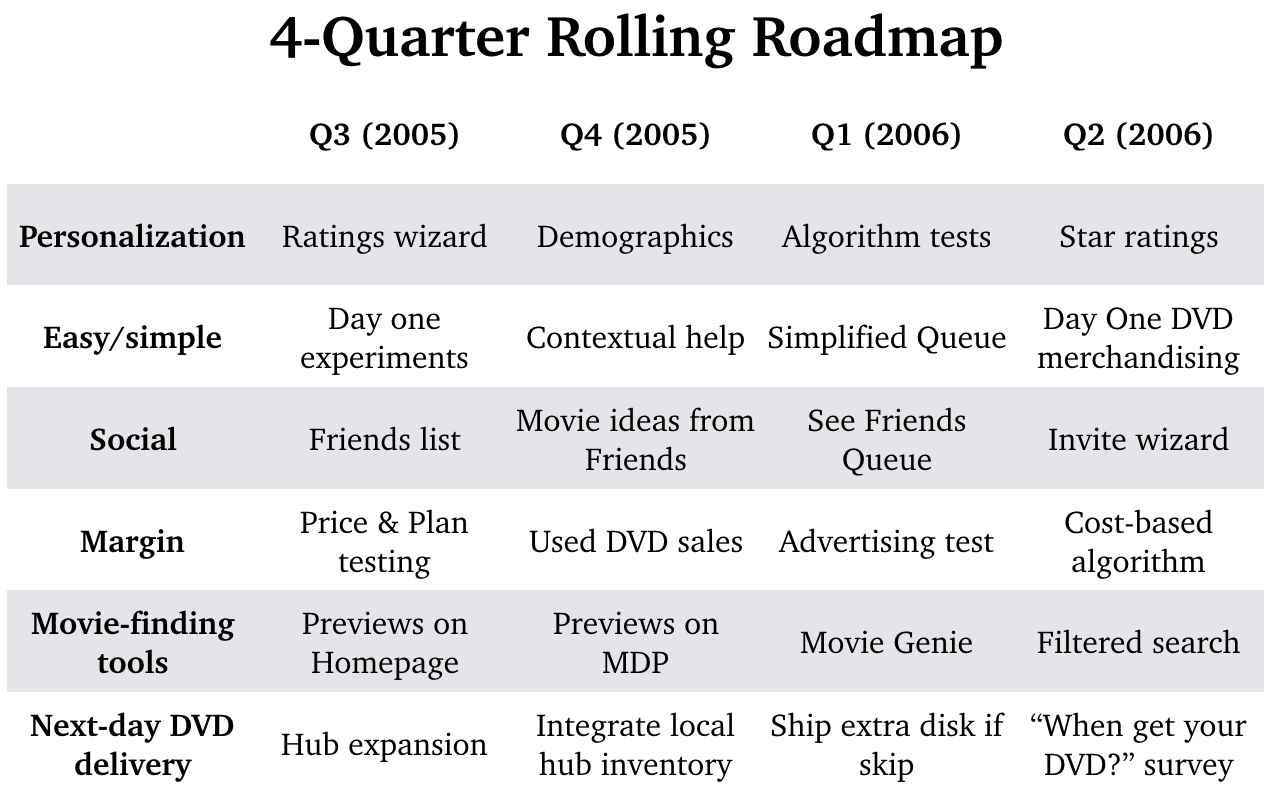A roadmap is an expression of your strategy. It shows how projects fit together, along with a rough time estimate

Roadmaps are a richly debated topic. On the one hand, they help teams to see how all the projects fit together. And with technology teams, who have long lead-time projects, it’s good to have advance notice of upcoming projects. On the other hand, a four-quarter roadmap provides false confidence, given uncertainty about what will work or not. It’s especially hard to guess the timing of projects, given this uncertainty.
When I share a roadmap, I express confidence about the next quarter’s projects but highlight that the content and timing of the subsequent quarters are highly speculative. There’s lots of near-term learning that will cause plans to change.
Here’s a stylized version of the Netflix roadmap, halfway through 2005:


The roadmap articulates the focus and organization of the product team. Once the teams define the strategies, proxy metrics, and projects for their swimlanes, it’s straightforward to complete the exercise. The roadmap is an artifact — an expression — of your product strategy.
The roadmap does not have to show all the work, however. It is a high-level view that outlines the key projects in each swimlane, along with the best guess of their timing. What’s missing in the Netflix example above is the technology infrastructure work. I also chose not to include the work in help and account.
The roadmap tells a story about how the overall strategy for the product team might play out over time. When I put together the roadmap, I think of the company’s board as the primary audience — they don’t need all the details.
One note on organizing product teams: I favor structures where each product leader has a clear proxy metric that communicates what success looks like in their area. Often there’s a product leader/team dedicated to each of the company’s high-level strategies. Todd, the product leader for personalization, had his “percentage of members who rate at least 50 movies in their first six weeks” metric. Meghan, the product leader focused on creating a more straightforward customer experience, had her “percentage of members who add at least three titles to their queue” metric. Proxy metrics provide radical role clarity.
Product Strategy Exercise (#9)
For each of your product swimlanes or pods, outline the projects against each strategy over four quarters. Put all of the projects into a roadmap like the one above.
In the next essay, I will share ideas about how to encourage big, long-term thinking as you define your product strategy:
Enjoy,
Gib
Gibson Biddle
PS. Here’s an index of all the articles in this series:

